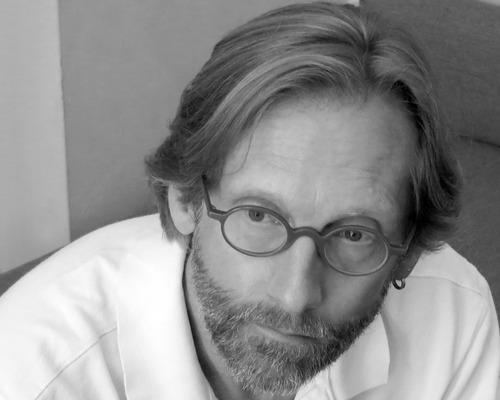
Go Forth is a series curated by Nicolle Elizabeth that offers a look into the publishing industry and contemporary small-press literature. See more of the series.
Lance Olsen is the author of several novels, including Girl Imagined by Chance, Anxious Pleasure: A Novel After Kafka, Head in Flames, and Calendar of Regrets, among others. He’s also written books on postmodernism and several story collections. I spoke with him recently about his newest novel, Theories of Forgetting, which is just out from Fc2. His website is here: http://www.lanceolsen.com/
—Brandon Hobson
BH: Lance, in terms of structure, Theories of Forgetting is a challenging book, with several stories running across each page, images, illustrations, and marginalia—and with such a great payoff. As a reader I love to be challenged, and I really loved this novel. What is it that interests you most about a novel’s structure both as writer and reader?
LO: For those unfamiliar with Theories of Forgetting: as you say, it’s comprised of three narratives. The first involves an experimental filmmaker completing a short one about Robert Smithson’s extraordinary earthwork, The Spiral Jetty. The second involves her husband’s slow disappearance across Europe and Jordan in the wake of his wife’s untimely death. And the third involves the marginalia added to his narrative (which may be a novel he wrote, may be his memoir) by his daughter. And along the way there’s a pandemic called The Frost, whose symptoms include an increasing sense of cold coupled with amnesia, and a religious cult called The Sleeping Beauties that, in reaction to The End Days, has come to worship barbiturates.
The first of those narratives runs across the “top” of the page from “front” to “back” of Theories. The second runs “upside down” across the “bottom” of the page from “back” to “front.” The daughter’s appears in blue script around and sometimes over the second.
And so: what is it that interests me most about a novel’s structure as both reader and writer? Like you, I’m all about challenge from both perspectives. That is, I find what I think of as manifestations of the difficult imagination extremely alluring—books that make us work both intellectually and emotionally as we navigate them; that refuse to deliver comfortable narratives in comfortable ways. I’m thinking here of myriad heroes of mine from, say, Laurence Sterne, Gertrude Stein, James Joyce, and Samuel Beckett to, more recently, Thomas Pynchon, Kathy Acker, David Foster Wallace, Mark Z. Danielewski, Ben Marcus, and Anne Carson. Their complex undertakings teaches us continually to be curious, thoughtful, crazy. Teach us to misbehave in incandescent ways.
The appeal for me of such writing practices lies in the argument...
You have reached your article limit
Sign up for a digital subscription and continue reading all new issues, plus our entire archives, for just $1.50/month.
Already a subscriber? Sign in




